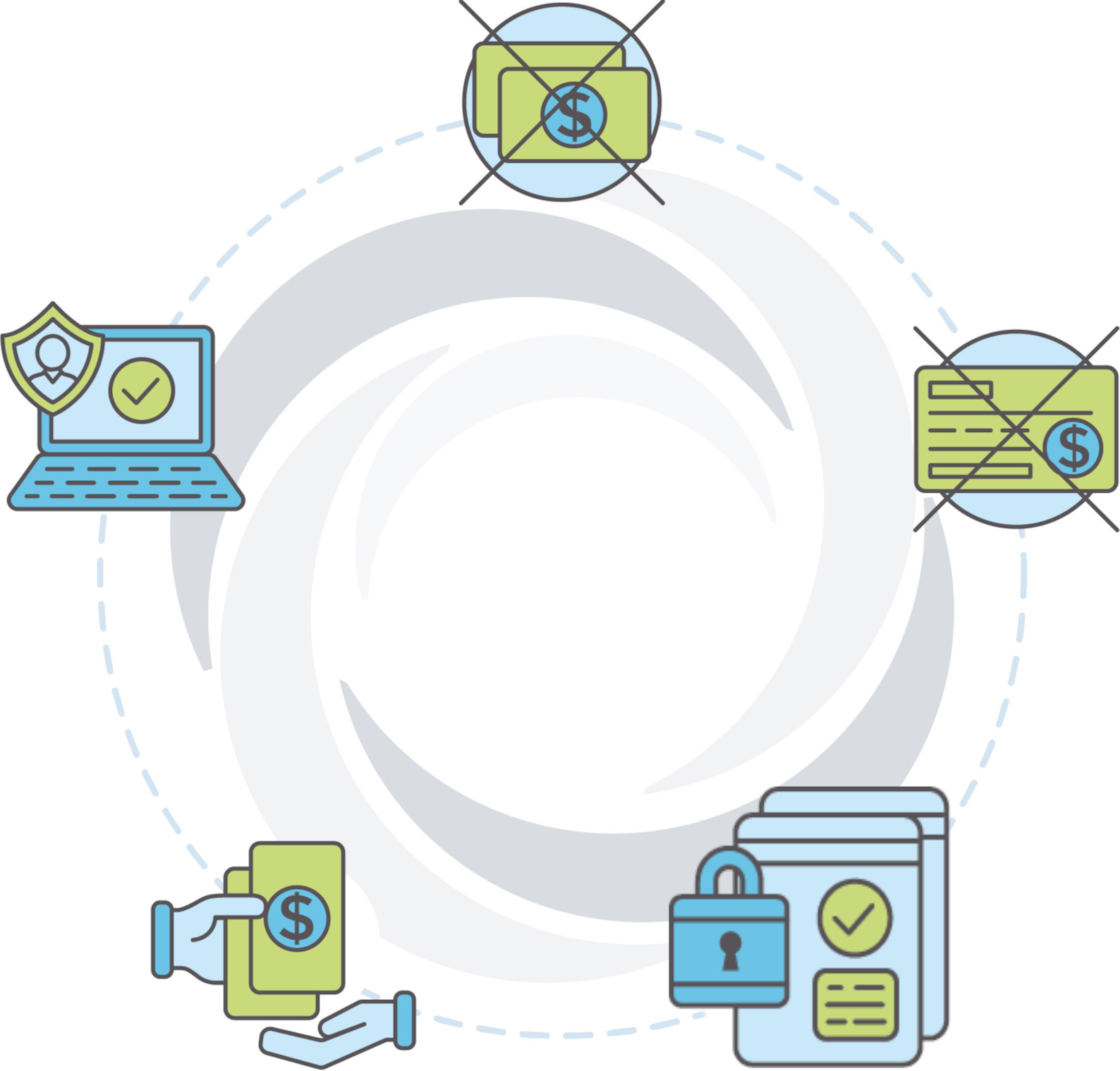From eradicating smallpox to the rapid development of COVID-19 vaccines, immunization has undeniably been a cornerstone of modern medicine—protecting countless lives from preventable diseases.
Yet, as the Centers for Disease Control and Prevention (CDC) acknowledges, no vaccine is 100% safe for everyone[1]. In rare cases, they can cause detrimental side effects. When these unfortunate events occur, the National Vaccine Injury Compensation Program (VICP)[2] should be a safety net for those affected—but the current system, rooted in legislation from 1986, is failing them.
Outdated laws and a lack of public awareness have turned the VICP into a labyrinth of red tape and frustration. It’s a system in dire need of reform, urgently needing to catch up with the realities of vaccine science and the needs of those it serves. The world of medicine has advanced leaps and bounds since the invention of the smallpox vaccine in 1798[3], yet the VICP remains frozen in time.
It’s time for Congress to step up and modernize the Public Health Service Act (PHS)[4], the outdated bedrock of the VICP. This is not an attack on vaccines; it’s a call for a just and compassionate system that upholds the rights and well-being of all, reflecting the progress we’ve made in medicine since that first smallpox inoculation.
Read on to learn why vaccine injury practitioners are calling on Congress to modernize the VICP and how those impacted by vaccine injuries can pursue compensation in the meantime.
Beyond the Needle: Vaccine Injury Compensation Program Overview
The VICP is a federal program designed to compensate individuals injured by certain vaccines. The compensation process is relatively straightforward for “Tabled Vaccines”, or those listed in the government’s Vaccine Injury Table[5]. A familiar example of a Tabled Vaccine is the seasonal influenza vaccine[6], known commonly as “the flu shot.”
For Tabled Vaccines, the government recognizes that the potential severity of injury can extend to paralysis or even death in extreme cases. This directly ties into compensation eligibility. For example, if someone receives a flu shot and develops Guillain-Barré Syndrome (GBS) within 3 to 42 days (not less than 3 days and not more than 42 days), they may be eligible for significant compensation.
The omission of the COVID-19 vaccine from the Vaccine Injury Table, despite its widespread use and undeniable relevance, draws attention to the need to modernize the VICP program. This exclusion forces those who believe they have suffered from severe COVID-19 vaccine (or any other non-Tabled vaccine) side effects to navigate a challenging path towards compensation—often bearing the immense burden of proving causation without the crucial support of established presumptions.
Here’s what the Health Resources & Services Administration (HRSA) says about proving a non-Tabled vaccine caused a serious injury[7]:
“If your injury and/or condition is not on the Table, or if your injury and/or condition does not meet the Table requirements, you must prove through evidence such as expert witness testimony, medical records, or medical opinion that the vaccine caused the injury and/or condition.”
Recent compensation statistics highlight not only the VICP’s crucial role but also the undeniable truth that vaccine injuries, though infrequent, are a reality with devastating consequences for those affected. In fact, in 2023, the VICP paid more than $173 million in compensation[7], including attorney fees. Since its inception in 1988, the program has compensated more than $5 billion.
This disproportionate compensation for flu shot injuries, compared to those caused by non-Tabled vaccines, exposes a glaring inequity within the VICP. It raises serious concerns about the system’s ability to provide fair and comprehensive compensation for all vaccine-related injuries, regardless of whether they are listed on the Table.
How did we get here?
We’ve reached a critical juncture in the VICP’s history. The outdated framework is buckling under the weight of an overloaded system—years of legislative neglect coupled with a surge in claims and the addition of new vaccines have pushed the program to the brink.
Recent testimony by Renée J. Gentry[8], a leading vaccine injury attorney, before the Select Subcommittee on the Coronavirus Pandemic in March 2024 highlighted the VICP’s critical state and the “perfect storm” of events that have pushed the program to the brink of collapse.
The result? A backlog of thousands of cases, agonizing wait times for petitioners, and a cap on non-economic damages that hasn’t been adjusted for inflation in decades. This is not merely a matter of inefficiency; it’s a denial of justice for those who have suffered vaccine injuries. The time for incremental changes has passed. A bold, comprehensive overhaul of the VICP is needed to ensure it truly serves its purpose: protecting public health while providing fair and timely compensation to those harmed.
The path forward is clear: modernize the PHS, increase funding for the VICP, adjust the damages cap, and extend the statute of limitations. This is Congress’ opportunity to rebuild a system that upholds the principles of justice, compassion, and scientific progress.
Proposed Reforms and Improvements
The Vaccine Injury Modernization Act of 2023 (H.R. 5142)[9] is a promising step toward reform.
The proposed reforms in H.R. 5142 aim to strike a balance between encouraging vaccine development and ensuring fair compensation for those who experience adverse reactions. To achieve this, several key improvements have been proposed:
Increase Special Masters
Increasing the number of Special Masters who oversee vaccine injury cases is a practical solution to address the current backlog and expedite the claims process. This would ensure that individuals receive timely and fair consideration rather than languishing in a system overwhelmed by demand.
Increase Reporting Requirements
Implementing mandatory reporting on case numbers and status is vital to transparency and accountability. Shedding light on the inner workings of the VICP will reveal its strengths and weaknesses and enable more informed policy decisions to increase public trust in the VICP Program.
Raise Cap on Non-Economic Damages
Raising the cap on non-economic damages is a long-overdue recognition of the profound impact that vaccine injuries can have on individuals and families. The current cap of $250,000 (set decades ago) fails to compensate for the pain, suffering and diminished quality of life that victims often endure. Increasing this cap to $600,000 is not about windfalls; it’s about acknowledging the true cost of these injuries and ensuring that victims receive the support they deserve.
Extend Statute of Limitations
Extending the statute of limitations from three to five years is a crucial reform recognizing the often-delayed onset of vaccine injuries. Many victims may not immediately connect their symptoms to a vaccine, and a longer filing period would enable them ample time to seek medical attention, gather evidence, and make informed decisions about pursuing compensation.
Add COVID-19 Vaccines to the Vaccine Injury Table
Perhaps the most obvious attempt to fill a timely gap in H.R. 5142 is extending the Vaccine Injury Table to include COVID-19 vaccines. This would streamline compensation for those potentially harmed by this widely administered vaccine and ensure equitable treatment.
Gentry’s testimony also emphasized the need to include COVID-19 vaccines in the VICP. These vaccines are currently restricted to the Countermeasures Injury Compensation Program (CICP)[10], which has proven ineffective compared to the VICP due to several factors:
- Lack of court process: No legal counsel or appeals.
- Limited damages: No pain and suffering compensation and strict limits on economic damages.
- Stringent statute of limitations: One-year limit from vaccination date.
- No COVID-19 vaccine injury table: The absence of a table means that people claiming injuries due to a COVID-19 vaccine face a higher burden of proof. They must provide compelling medical and scientific evidence to establish a causal relationship between the vaccine and their injury.
- Low compensation rates and amounts: Few claims have been approved, and settlements have been meager. As of June 1, 2024, the CICP found 52 COVID-19 claims eligible for compensation[11] yet has only compensated 13. Of those 13, the highest compensation was $8,962 for a myopericarditis injury[12].
- Negative impact on vaccine confidence: Erosion of public trust, fueling vaccine hesitancy.
USClaims’ Role and Resources
At USClaims, we’re passionate about helping those wronged by the system designed to protect them. We regularly hear from individuals and families who struggle navigating the outdated and confusing VICP. And, while legislative updates to H.R. 5142 will help level the qualifications for VICP compensation eligibility, VICP petitioners will still face a long and complex claim process ahead before compensation can be recommended.
USClaims is here to help VICP petitioners get the funding support they need to cover expenses while they wait for a successful outcome of their claim. We offer more than just funding assistance; we provide information to those lost in the maze of legal complexities. Our comprehensive online resources, including a list of approved VICP attorneys published by the government, are one way we try to help vaccine injury victims search for compensation.
If you or someone you know has been impacted by a vaccine injury, visit our Vaccine Injury Funding website to learn more about the VICP claim process and how USClaims can help.
Disclaimer: The opinions expressed in this article are our own and should not be considered legal advice.
Resources
- CDC. “History of Vaccine Safety History.” Centers for Disease Control and Prevention, 2019, www.cdc.gov/vaccinesafety/ensuringsafety/history/index.html.
- “National Vaccine Injury Compensation Program | HRSA.” Www.hrsa.gov, www.hrsa.gov/vaccine-compensation.
- Immunize.org. “Vaccine History Timeline.” Immunize.org, 17 Jan. 2024, www.immunize.org/vaccines/vaccine-timeline/.
- “42 USC Ch. 6A: PUBLIC HEALTH SERVICE.” House.gov, 2018 uscode.house.gov/view.xhtml?path=/prelim@title42/chapter6A&edition=prelim
- “Covered Vaccines | HRSA.” Www.hrsa.gov, www.hrsa.gov/vaccine-compensation/covered-vaccines#:~:text=If%20your%20injury%20and%2For. Accessed 8 July 2024.
- “Seasonal Flu Vaccination and Preventable Disease | CDC.” Www.cdc.gov, 5 May 2022, www.cdc.gov/vaccines/vpd/flu/.
- “Covered Vaccines | HRSA.” Www.hrsa.gov, www.hrsa.gov/vaccine-compensation/covered-vaccines.
- Gentry, Renée. National Vaccine Injury Compensation Program Needs Modernizing Testimony before the Select Subcommittee on the Coronavirus Pandemic. 2024.
- Congress.gov, www.congress.gov/bill/118th-congress/house-bill/5142/text. Accessed 4 Aug. 2023.
- “Countermeasures Injury Compensation Program (CICP) Data | HRSA.” Www.hrsa.gov, www.hrsa.gov/cicp/cicp-data.
- “Table 4. CICP Claims Compensated (Fiscal Years 2010 – 2023) | HRSA.” Www.hrsa.gov, www.hrsa.gov/cicp/cicp-data/table-4.
- “Covered Countermeasures | HRSA.” Www.hrsa.gov, www.hrsa.gov/cicp/covered-countermeasures. Accessed 8 July 2024.







